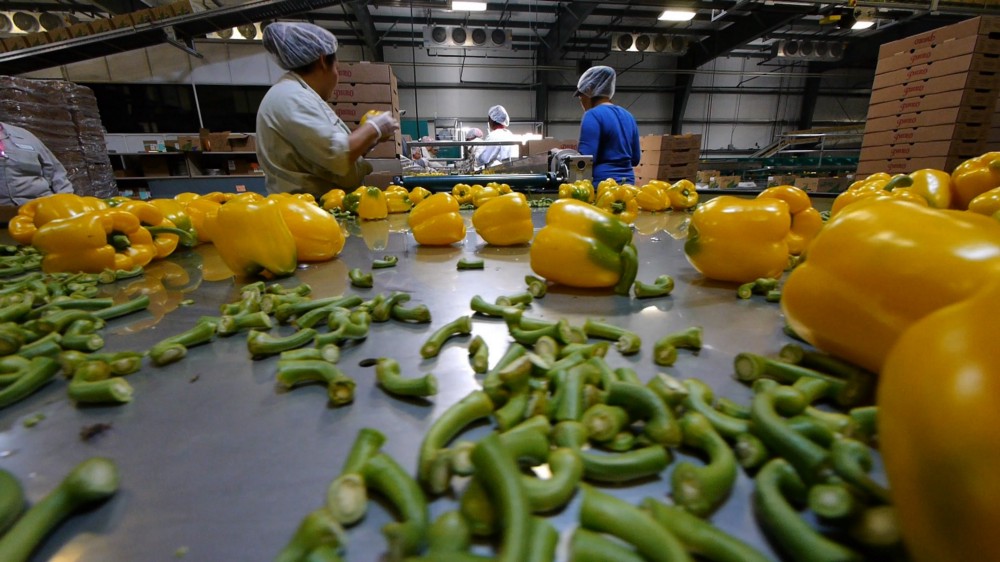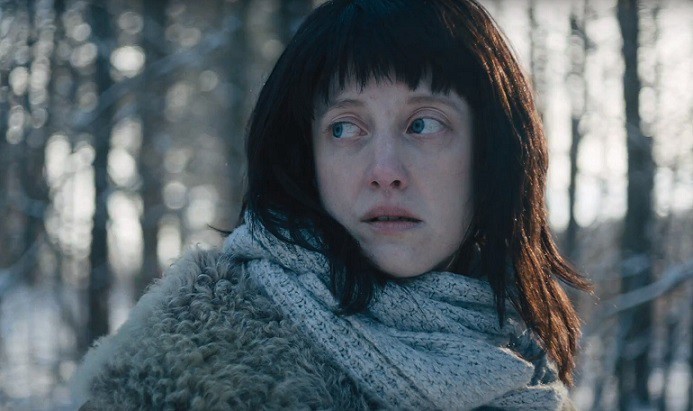Award-winning filmmaker Min Sook Lee has a diverse and prolific portfolio of multimedia work. Lee has directed numerous critically acclaimed social documentaries, including “My Toxic Baby,” Donald Brittain Gemini winner “Tiger Spirit,” Hot Docs Best Canadian Feature winner “Hogtown,” “El Contrato,” “Badge of Pride,” and Canadian Screen Award winner, “The Real Inglorious Bastards.” (Press materials)
W&H: Describe the film for us in your own words.
MSL: “Migrant Dreams” is a call to action. It’s a promise of resistance in Canada’s temporary foreign worker program. Women workers who are packing fruits and vegetables have had enough. They are sick of being treated as a commodity. “Migrant Dreams” uses documentary filmmaking as a tool to get their story out.
W&H: What drew you to this story?
MSL: I’ve been aware of issues around migrant workers for many years — I made a documentary about migrant workers from Mexico working in Canada back in 2000. My first introduction to migrant workers was during a fact-finding mission organized by the activists group, Justice for Migrant Workers. At that time, Chris Ramsaroop was one of the co-founders, and wanted to look at the situation for women migrant workers in Canada.
As it happened, there were a group of migrant workers who went on strike. They were striking for unpaid wages but also treatment on the farm. I was living in Toronto and I ran into Chris, who told me about this strike.
I remember thinking: I didn’t know there were migrant workers in Canada. I thought that was an American issue, or something that wouldn’t happen in Canada. I was not familiar with the story of migrant workers because the story is mostly hidden from the mainstream media. So I went to Leamington, Ontario back in 2000.
When I got there and met the workers, it was a deeply unsettling, eye-opening experience. We arrived there in Leamington and drove into a church parking lot, about 20 of us. We got off the bus and found that anyone who could speak Spanish was immediately surrounded by workers who wanted to access information. They had many, many questions about exposure to pesticides and unsafe working conditions.
People were rolling up their sleeves to show rashes on their forearms and different irritations from handling pesticides — often without protection. They were also holding tax forms in confusion.They had no information about the Canadian pension plan or EI (Employment Insurance). They had questions about tax deductions and a whole lot of different issues.
It became quite clear to me that this was a population who, in some ways, had been deposited into Canada with no support system, and they were encountering some very serious labor and human rights issues without any avenues for justice. So they were completely isolated; but at the same time, they were trying to find ways to fight back and be in solidarity with Canadians. The leaders of the Wildcat strike were deported back to Mexico.
The number of migrant workers in Canada has grown exponentially — without dialogue about this country’s relationship to immigrants and their pathway to citizenship. Canada’s policies on migrant workers is in direct relation to its policies on immigration. It’s a myth that Canada is this haven for new immigrants, with its doors wide open, but many of those doors are locked and sealed tight — particularly to the global South. T
he only pathway that is actively open is through the migrant labor program. The program demands that workers are tied to one employer; they oftentimes cannot speak out if their labor rights or human rights are violated. I really felt it was important to make a film that looked at who is given permanent residency and who is treated as a disposable resource.
W&H: What do you want people to think about when they are leaving the theater?
MSL: I’d like them to think about the economic, political, and social interconnections that draw us to people with whom we believe we have no connection. I’d like for someone who is middle class, someone who is low-income, a single parent, or a foreign exchange student studying art in Canada to go and see the film — and that we are all connected to these temporary foreign workers.
In Toronto, more than fifty percent of us are precariously employed — what I mean by that is more than fifty percent of the workers in Toronto are working in contract or part-time jobs that have no security. This is the new reality. What we need to start recognizing is that the economic system is not working for the majority of Toronto workers — especially not migrant workers.
When we act out of fear we shut down the possibility to imagine what our societies can be like. We shut down dreaming about a more just and equitable society. When we see the migrant workers resisting the way they are in this documentary, we see that we can ask for more. More is possible — another world is possible.
W&H: What was the biggest challenge in making the film?
MSL: The biggest challenge was the risk. I was very concerned and am still very concerned about the risks the workers are taking in the film because they are putting their necks on the line to do it. They’re making themselves vulnerable by critiquing a system that is designed to silence them, dehumanize them and, in due order, deport them if they speak out.
Regardless of these risks, the women have chosen to speak out. They know this is an unfair system and they’re demanding that changes be made. They want the message to get out. One person in the film said, “In the end I don’t care if I win or lose, at least I tried. I told the truth.”
W&H: How did you get your film funded? Share some insights into how you got the film made.
MSL: It began with crowd sourced funding, from people who were aware of the issues about migrant worker justice, who were familiar with labor rights and human rights, and those who were familiar with my 2000 film, “El Contrato.” There was also development money at the same time from TVO, the provincial broadcaster, and they had some development money to do some initial research and initial shooting.
Subsequent to that, TVO came on as an official broadcaster and then OMNI Television came on to support the project. There was some money from tax credits, which is dangerous because those don’t come in until you’re done with the film. It’s a scary financial house of cards. Hot Docs’ Shaw Media Fund supported the production, and also the Rogers’ Documentary Fund.
W&H: What’s the best and worst advice you’ve received?
MSL: The best advice is to follow your gut — your “nunchi” in Korean culture. Accept yourself, because a lot of times you’ll be making choices in unpredictable situations. Often those choices are not premeditated, but are instead informed by your inner guidance.
It’s not necessarily advice, but the worst advice would be listening to the first “no.” You always get nos. Many people who get a “no” just go away. Being told to do that is just terrible advice.
W&H: What advice do you have for other female directors?
MSL: Work with people that support you, and are willing to give critical advice — not people that are waving your flag thoughtlessly. Work with people who do not undermine you. Recognize and identify support that is intellectual, spiritual, and physical.
A filmmaker that has good support from their production team will feel much more secure. In the film making industry, women filmmakers are undermined and disrespected, and if you’re not careful you can start to feel less than and insecure. The support system you choose should protect you from those anxieties.
W&H: Name your favorite woman-directed film and why.
MSL: Alanis Obomsawin’s “Kanehsatake: 270 Years of Resistance.” It’s a powerful piece of journalism, media activism, and creative filmmaking that gets right to the heart of Canada’s colonial reality.







